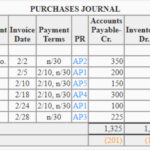Company A recorded the bond sale in its accounting records by increasing Cash in Bank (debit asset), Bonds Payable (credit liability) and the Discount on Bonds Payable (debit contra-liability). Bonds represent an obligation to repay a principal amount at a future date and pay interest, usually on a semi‐annual basis. Unlike notes payable, which normally represent an amount owed to one lender, a large number of bonds are normally issued at the same time to different lenders.
Wichita is in dire need of additional capital to keep operating and to bring several promising products to final development, testing, and production. Donald, as owner of 51% of the outstanding stock, manages the company’s operations. He places heavy emphasis on research and development and long-term growth. The other principal stockholder is Nina Friendly who, as a nonemployee investor, owns 40% of the stock. Nina would like to deemphasize the R & D functions and emphasize the marketing function to maximize short-run sales and profits from existing products. She believes this strategy would raise the market price of Wichita’s stock.
Why You Can Trust Finance Strategists
This is classified as a liability in the books of the issuer and is amortized to interest expense over the remaining life of the bonds. The current market rate is higher than the interest rate being paid by the issuer, so the investors pay less for the bond in order to derive a higher effective rate of interest on their investment. Bonds on the secondary market with fixed coupons will trade at discounts when market interest rates rise. While the investor receives the same coupon, the bond is discounted to match prevailing market yields. The sum of the present value of coupon payments and principal is the market price of the bond.
Fitch Assigns Salt's Senior Secured Bonds Final 'BB+'/'RR2' Ratings - Fitch Ratings
Fitch Assigns Salt's Senior Secured Bonds Final 'BB+'/'RR2' Ratings.
Posted: Mon, 31 Jul 2023 15:20:00 GMT [source]
A reliable fair value measure for the equipment is not available, given the age and specialty nature of the equipment. As a result, Wie’s accounting staff is unable to determine an established exchange price for recording the equipment (nor the interest rate to be used to record interest expense on the long-term note). Discounts also occur when the bond supply exceeds demand when the bond's credit rating is lowered, or when the perceived risk of default increases.
Ask a Financial Professional Any Question
The difference between the par value and the purchase price is referred to as the "discount." Rational investors would not pay any more than the present value of these two future cash flows, discounted at the desired yield rate. The Discount on Bonds Payable account is a contra-liability account in that it is offset against the Bonds Payable account on the balance sheet in order to arrive at the bonds' net carrying value. All of Donald’s personal capital and borrowing power is tied up in his 51% stock ownership. He knows that any offering of additional shares of stock will dilute his controlling interest because he won’t be able to participate in such an issuance. But, Nina has money and would likely buy enough shares to gain control of Wichita.

The entry on December 31 to record the interest payment using the effective interest method of amortizing interest is shown on the following page. As the discount is amortized, the discount on bonds payable account's balance decreases and the carrying value of the bond increases. The amount of discount amortized for the last payment is equal to the balance in the discount on bonds payable account. As with the straight‐line the definition, explanation and examples of tax free method of amortization, at the maturity of the bonds, the discount account's balance will be zero and the bond's carrying value will be the same as its principal amount. See Table 2 for interest expense and carrying values over the life of the bond calculated using the effective interest method of amortization . As the premium is amortized, the balance in the premium account and the carrying value of the bond decreases.
Just like with a discount, the premium amount will be removed over the life of the bond by amortizing (which simply means dividing) it over the life of the bond. The premium will decrease bond interest expense when we record the semiannual interest payment. The carrying value will continue to increase as the discount balance decreases with amortization.
Discount on Bonds PayableDefined with Example & More
On July 1, Lighting Process, Inc. issues $10,000 ten‐year bonds, with a coupon rate of interest of 12% and semiannual interest payments payable on June 30 and December 31, when the market interest rate is 10%. The entry to record the issuance of the bonds increases (debits) cash for the $11,246 received, increases (credits) bonds payable for the $10,000 maturity amount, and increases (credits) premium on bonds payable for $1,246. Premium on bonds payable is a contra account to bonds payable that increases its value and is added to bonds payable in the long‐term liability section of the balance sheet.

Depending on the current market, investors might be unwilling to earn the interest rates that the bond states. This means that companies can’t issue bonds at the same price that is stated on the bond itself. An adjustment must be made in order to adjust the stated rate of interest to match the current market rate. In this example, Company ABC will amortize $700 of the discount on bonds payable in the first year using the effective interest method. The bond’s carrying value will increase to $95,700, and the process will continue until the bond’s carrying value reaches $100,000 at the end of its term. Assume the investors pay $9,800,000 for the bonds having a face or maturity value of $10,000,000.
Create a Free Account and Ask Any Financial Question
This entry records $1,000 interest expense on the $100,000 of bonds that were outstanding for one month. Valley collected $5,000 from the bondholders on May 31 as accrued interest and is now returning it to them. See a comparison between secured vs unsecured bonds, and term bonds vs serial bonds.
BRW Announces $0.085 Dividend - Business Wire
BRW Announces $0.085 Dividend.
Posted: Tue, 01 Aug 2023 12:45:00 GMT [source]
The carrying value of a bond is not equal to the bond payable amount unless the bond was issued at par. See Table 3 for interest expense and carrying value calculations over the life of the bond using the straight‐line method of amortization . This example illustrates how a company records a bond issuance at a discount and how the Discount on Bonds Payable is treated over the life of the bond. A bond that is issued at a discount is a bond that has been issued for less than the par value of the bond.
Step 1: Meaning of discount on bonds payable
For an example of a bond discount, suppose that a company is preparing to issue some bonds that, at maturity, will be worth $20,000,000. The reason a discount on bond payable occurs is the stated rate of interest is below the market rate of interest. The discount of $7,024 represents the present value of the $1,000 difference that the bondholders are not receiving over each of the next 10 interest periods (5 years' interest paid semi-annually). Discount on Bonds Payable is a contra liability account with a debit balance, which is contrary to the normal credit balance of its parent Bonds Payable liability account.
These lenders, also known as investors, may sell their bonds to another investor prior to their maturity. The discount on bonds payable is treated as a contra-liability account, which means it reduces the bonds payable balance on the balance sheet. Over the life of the bonds, the discount is amortized, and the carrying value of the bonds payable increases. Over the life of the bonds, the $2,000 discount would be gradually amortized to Interest Expense, thus increasing the total interest cost of the bonds for ABC Corporation. The Discount on Bonds Payable balance decreases over time until it reaches $0 when the bonds mature. At the same time, the carrying value of the Bonds Payable (Bonds Payable minus Discount on Bonds Payable) increases from the issue price ($98,000) to the face value ($100,000).
Financial Accounting
But, when the company sold the bonds to some investors, there was a market interest rate of 5.2%. (b) Prepare the journal entry to record the sale of the Colorado Co. stock during 2018. For example, a bond with a par value of $1,000 that is trading at $980 has a bond discount of $20. The bond discount is also used in reference to the bond discount rate, which is the interest used to price bonds via present valuation calculations. The Discount on Bonds Payable serves as a way to adjust the actual cost of borrowing for the issuing company when bonds are sold at a discount, as it effectively increases the interest expense over the bond’s life. This means the bonds would have been paying any investors below the current market rate of interest.
- The carrying value will continue to increase as the discount balance decreases with amortization.
- These lenders, also known as investors, may sell their bonds to another investor prior to their maturity.
- The difference of $200,000 will be recorded by the issuing corporation as a debit to Discount on Bonds Payable, a debit to Cash for $9,800,000, and a credit to Bonds Payable for $10,000,000.
- Valley collected $5,000 from the bondholders on May 31 as accrued interest and is now returning it to them.
- Bonds payable are long-term liability accounts used to record a company's or organization's outstanding debt obligations that arise from issuing bonds.
Conversely, falling interest rates or an improved credit rating may cause a bond to trade at a premium. Bonds often take companies months to construct and line up the proper legal structures before they are actually sold to the public. This means that the bond terms like interest, payback period, and principle amount are set months in advance before they are issued to the public.